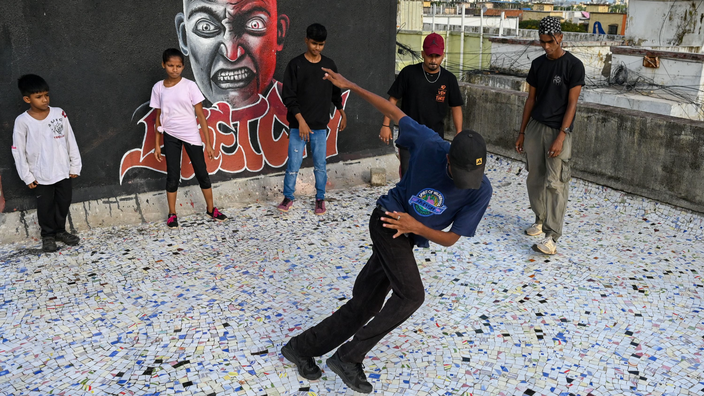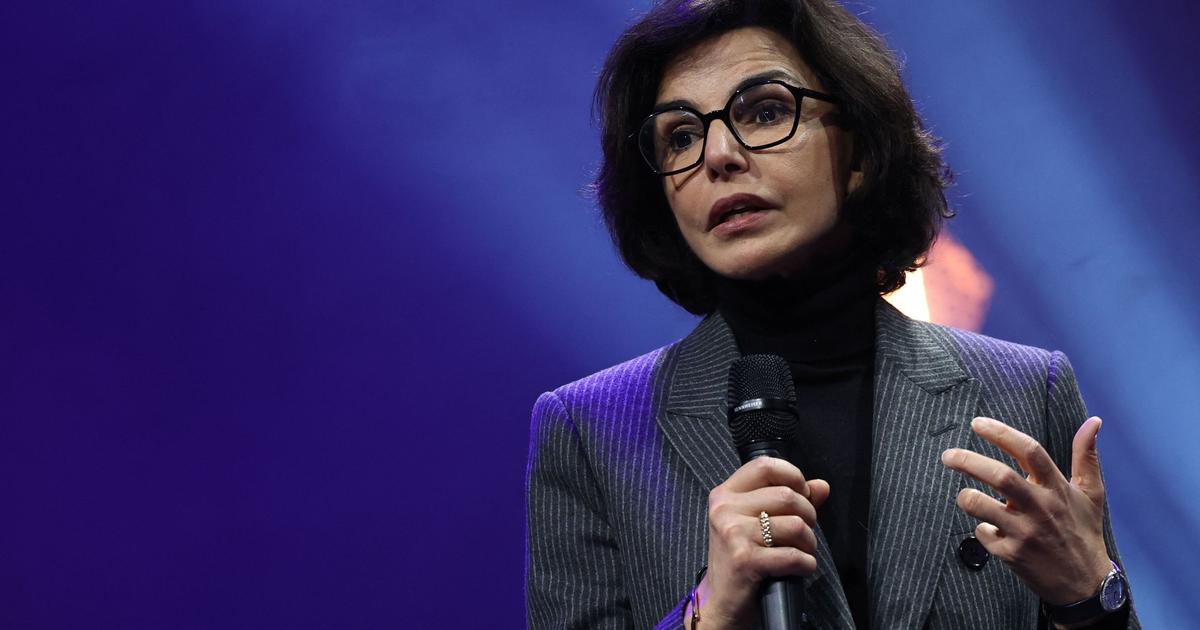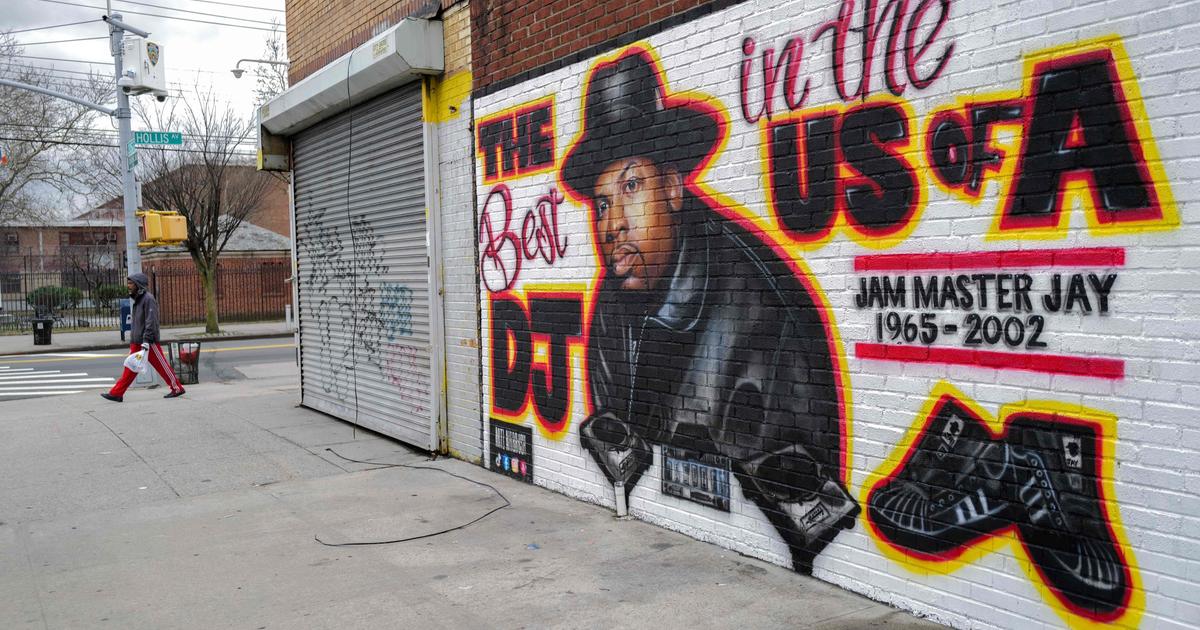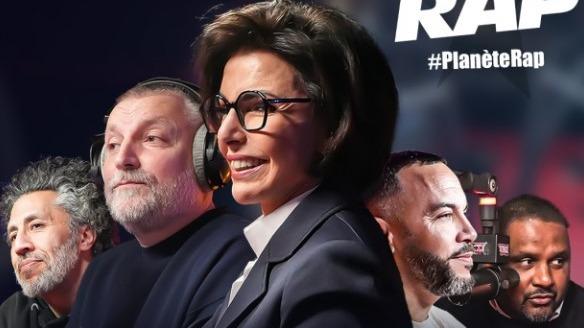Kar Dikhaya
was a cry of hope. Recorded in the summer of 2020 in the sprawling suburb of Bombay, India, the song means "
We did it
" in Hindi. The sung feat is due to the context of its achievement, which saw an Indian community come together and take up the challenge of mobilization in the face of the Covid-19 pandemic. It also redoubles its meaning by the unexpected identity of its actors and producers of fortune: a band of young inhabitants of Dharavi, the largest slum in India. With triumphant pride, and produced using their cell phones, the rap music video has received praise from many professionals and international stars. So many acclamations that have since made these young Indians in love with hip-hop shine.
Read also: The suffocating confinement of the largest Indian slum
“At first we were scared. What was going to happen to us? But we have supported the doctors (...) now it's your turn ”
.
More catchy, and arguably more sincere, than McFly and Carlito's boast about barrier gestures,
Kar Dikhaya
evokes - both in Hindi and Tamil - the struggle of young people against the discrimination that plagues the labyrinthine slum of Dharavi.
Who is their neighborhood, their home.
Systematically associated with rubbish and disease, the agglomeration is home to around a million people, most of whom live in one-room slums, without sanitation, forcing them to share common toilets.
Hailed by celebrities like Oscar-winning composer AR Rahman, the song last year shone the spotlight on Dharavi's living conditions and the admirable resilience of his youth.
A rap academy to change the game
Among the gang of teenagers ready to shake everything up, Ayush Tegar Renuka, 16, says he is
"so proud"
to belong to this community.
"The Dharavi shown on TV channels and the real Dharavi are very different places
,
"
says the man who started to practice breakdance at the Dharavi Dream Project hip-hop academy three years ago, counting down the pleas of his mother who feared he would end up in the hospital. Like her, many parents were reluctant to enroll their children in free academy classes, deeming the practice of hip-hop perilous, threatening to their schooling. Or simply unnecessary.
Dolly Rateshwar, 38, co-founder of the Dharavi Dream Project, with support from startup Qyuki and US giant Universal Music Group, was determined to change their minds.
At first, she was anxious to venture into Dharavi, but the teenagers she met there touched her.
“
I was brought up in a very conservative family (...) I didn't know that there was a world bigger than mine
, explains this Hindu priest's daughter to AFP.
I was worried that these kids would get lost in life because they ignore the opportunities available to them.
"
I had zero confidence before I started rapping.
The academy changed my life.
Joshua Joseph, aka MC Josh
The school offers free breakdance, beatboxing and rap lessons to around 20 students.
The project grew quickly, with young people like Joshua Joseph - aka MC Josh - seeing hip-hop as a way to make their voices heard.
If black American rappers have been able to denounce the racism of which their community is the victim, he says, with hip-hop these young Indians can also denounce the glaring inequalities and the mistreatment inflicted on marginalized populations in India.
"I had zero confidence before I started rapping
, the 21-year-old told AFP,
the academy has changed my life."
Read also: Who is Moona, ascending satellite of brutal rap and future heroine of the Diana Boss series?
"
Dharavi Mission
" against the coronavirus
With the outbreak of the coronavirus in the spring of 2020, his income collapsed overnight and strict confinement was imposed on Dharavi for several months.
The authorities immediately measured the risk for the slum and launched the “
Dharavi Mission
”, establishing compulsory confinement, strict sanitation of communal toilets, “
fever camps
” for screening, quarantine rooms, etc.
Dharavi had recorded at the end of June 2020 only 82 deaths out of the 4,500 recorded in Bombay.
Like the shanty town, the academy staff were not intimidated by the virus and taught classes online.
A breakdance class on the rooftops of Dharavi, in July 2021. Punit PARANJPE / AFP
As the pandemic progressed, Dolly Rateshwar realized that the academy could expand its reach and posted an invitation on Instagram to take her classes.
She received 800 requests in the first 24 hours.
A year later, the school is providing lessons via the internet to 100 young people, half of whom are from Dharavi.
A few hundred casual students are connecting from all over India and overseas.
I also try to talk to them about other possible careers in the music industry, as artist manager, or social networks.
Above all, I want them to keep their heads up.
Dolly Rateshwar, co-founder of the Dharavi Dream Project
Read also: Covid-19: India urgently accelerates its vaccination campaign
Despite their remarkable and unexpected success in the fight against Covid-19, slum dwellers still face stigma.
A situation which does not discourage Dolly Rateshwar, whose main objective remains to make the voice of the youth of Dharavi heard and to assure them of prospects.
“Obviously, everyone wants to become a superstar but (...) I also try to talk to them about other possible careers in the music industry, as artist manager, or social networks
, she says.
Above all, I want them to keep their heads up.
"
For teacher Vikram Gaja Godakiya, the academy is more than a basic salary.
"People have always been unfair to Dharavi,"
said the 21-year-old, noting that the pandemic has made employers even more reluctant to hire slum dwellers. When he started sneaking breakdancing nine years ago watching videos on YouTube, he never imagined making it his profession.
“Breakdancing has given meaning to my life
,” he says
, “I want my students to understand that they can do anything if they give it 100%.”









